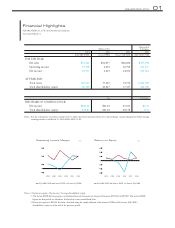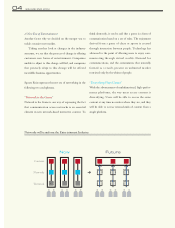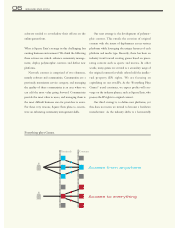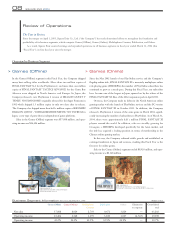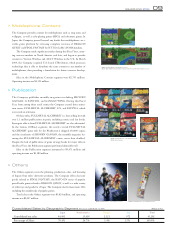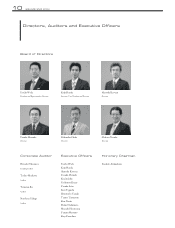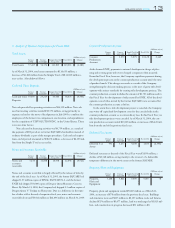Square Enix 2004 Annual Report Download - page 5
Download and view the complete annual report
Please find page 5 of the 2004 Square Enix annual report below. You can navigate through the pages in the report by either clicking on the pages listed below, or by using the keyword search tool below to find specific information within the annual report.
SQUARE ENIX 2004 03
market growth that kept profits well distributed within
the industry value chain.
However, these conditions have changed.
For hardware vendors, this change was embodied
by the ability of PCs, and in the near future mobile
phones, to match the unique features of game consoles,
which had lost their lead in graphics rendering capabili-
ties. Game consoles were also behind PCs in
incorporating networking functions, an indispensable
competitive feature in the new industry structure. For
software vendors, this change represented an increase
in development costs to accommodate much improved
hardware specifications and technical difficulties in
transferring game software to other media. For cus-
tomers, this change meant the emergence of markets
for new digital content beyond video games. All of
these changes collided together in the game industry.
The strength of having a vertically integrated business
model began to become a weakness, because there were
few companies, other than console providers, which
were large enough to weather downward pricing pres-
sure and so the market grew too large for console
providers to keep pace.
At a glance, this might appear to be a problem
unique to Japan, but we believe it applies in global
markets as well. These conditions are not reflected
outside Japan yet owing to differences in the timing of
game console proliferation in Japan and other coun-
tries, as well as differences in the distribution structure.
Even if the aforementioned change did not occur, the
real issue at hand is advancements in network technol-
ogy. Open networks disrupt vertically integrated
business models, and this is not something unique to
Japan.
The video game industry is changing from a verti-
cally integrated model to a horizontally linked one, and
customer ownership is shifting from game console
manufacturers to content providers.
>Network is the Game.
Everything plays Games.



